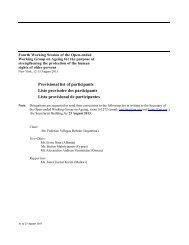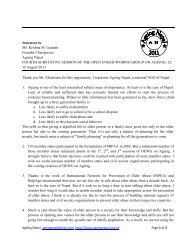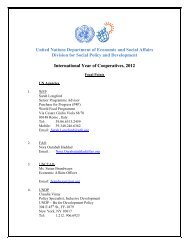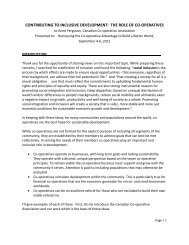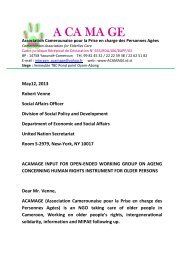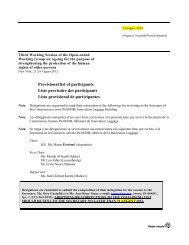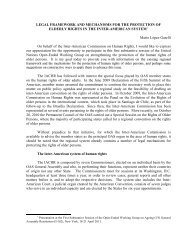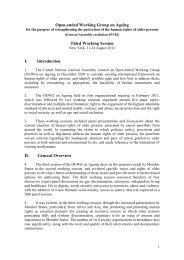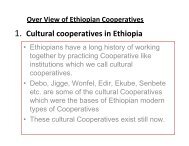Audit of Residential Facilities, Final report - Division for Social Policy ...
Audit of Residential Facilities, Final report - Division for Social Policy ...
Audit of Residential Facilities, Final report - Division for Social Policy ...
Create successful ePaper yourself
Turn your PDF publications into a flip-book with our unique Google optimized e-Paper software.
4.9 Trans<strong>for</strong>mationWhile the issue <strong>of</strong> trans<strong>for</strong>mation, or the lack there<strong>of</strong>, is addressed in some sections <strong>of</strong> this<strong>report</strong>, a few additional issues need to be addressed. The Trans<strong>for</strong>mation Guidelines indicatesthat the critical elements <strong>of</strong> trans<strong>for</strong>mation in relation to governance are as follows:- Management structures that reflect the demographic pr<strong>of</strong>ile <strong>of</strong> the region and the provincethey serve- There needs to be a balance between demographics and effective management- Demographic pr<strong>of</strong>iles <strong>of</strong> communities to be reflected in management structures <strong>of</strong>organisations (skills transfer, capacity building, transparent processes etc.)If one were to take the above literally, it is easy to assume that trans<strong>for</strong>mation is happeningespecially as many communities have remained intact since 1994 with few areas reflectingchanges in the demographic pr<strong>of</strong>ile <strong>of</strong> the community. Hence, on the surface it would appear thatthese homes are trans<strong>for</strong>ming as they reflect the demographic pr<strong>of</strong>iles <strong>of</strong> the communities inwhich they are based and which they still largely serve.It was also clear that some homes used cost as a way to exclude different groups <strong>of</strong> people. TheGuidelines notes that “…the same quality and standard <strong>of</strong> service is provided to all, irrespective<strong>of</strong> race, gender and ability to pay…” While this implies that a home cannot refuse someone whocannot af<strong>for</strong>d the prescribed fees, in practice homes do not accept those who cannot af<strong>for</strong>d thefees. Although some white families also battled to pay the monthly fees, sometimes as much asR8 000 – R15 000 per month, they were still however able to af<strong>for</strong>d it, probably at the expense <strong>of</strong>other priorities. Many indicated that they had no option but to pay it because they couldn‟t takecare <strong>of</strong> their relative.As the social construct <strong>of</strong> black families start to change and they continue to choose the option <strong>of</strong>institutional care <strong>for</strong> their frail residents, the urgency to address trans<strong>for</strong>mation at various levels inthe homes must be addressed. Rather than using the reasons <strong>of</strong> culture and social norms as anexcuse to exclude people there has to be some incentive <strong>for</strong> homes to embrace diversity and tobe held accountable <strong>for</strong> trans<strong>for</strong>mation. While trans<strong>for</strong>mation is not going to be easy there has tobe an intention, a plan and an effective monitoring system to ensure that while there isconsideration <strong>for</strong> the "more advantaged" older people who might not be able to easily adjust, sotoo should we be mindful <strong>of</strong> those pensioners who are adversely affected by a continuation <strong>of</strong> thesystem.65 | D S D A u d i t o f R e s i d e n t i a l F a c i l i t i e s



